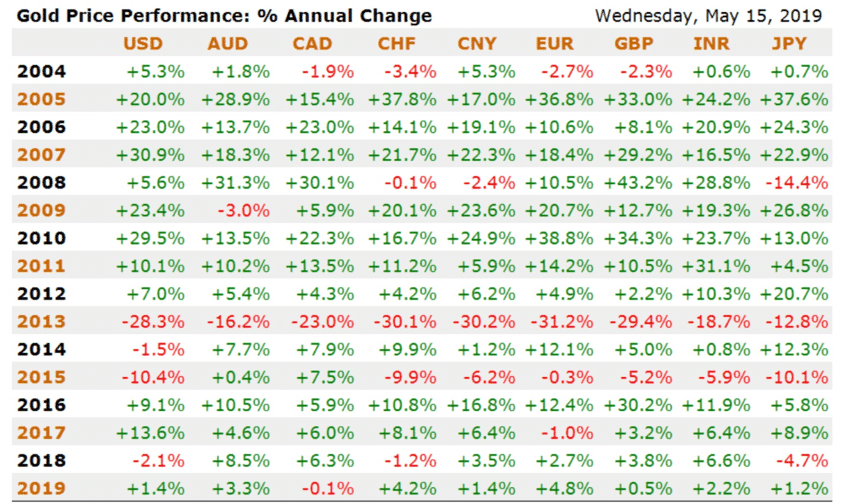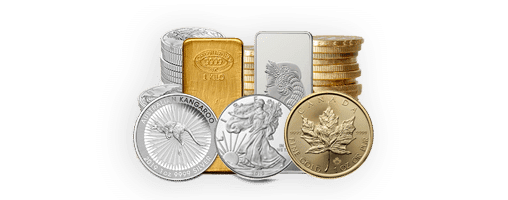How to Invest in Gold Bullion
If you’ve decided to invest in physical gold bullion, here are some things to keep in mind.
Popular Gold Bullion Investments
There are many different products to invest in, but these are some of the most commonly available.
Gold Coins
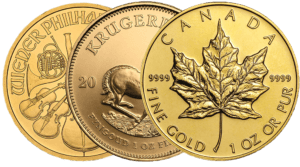
Investment-grade gold coins are usually produced by an official government mint. They come in various sizes, with 1oz being the most popular. Smaller sizes like 1/2oz, 1/4oz, 1/10oz and even smaller are also available. Sizes over 1oz are rare. These investment gold coins will typically carry a higher premium over spot than a standard gold bar, but they are highly liquid and trusted globally.
American Gold Eagles – the Gold Eagle is the US Mint’s official gold bullion coin. It’s available in 1oz, 1/2oz, 1/4oz and 1/10oz sizes, and is easy to trade at any bullion dealer or coin shop. We always carry American Gold Eagles at Bellevue Rare Coins.
Canadian Gold Maple Leafs – Canada’s official gold coin is the Maple Leaf. It’s available in 1oz, 1/2oz, 1/4oz, 1/10oz and 1/20oz sizes. Maple Leafs are usually a bit cheaper than Gold Eagles (i.e. they carry less of a premium over gold spot value). We typically have Gold Maple Leafs at Bellevue Rare Coins.
South African Gold Krugerrand – South Africa’s primary offering for the gold bullion market is the Krugerrand. At one point, these coins made up the vast majority of the global gold bullion trade – and they remain quite popular to this day. The Krugerrand is available in 1oz, 1/2oz, 1/4oz and 1/10oz sizes. We generally have Gold Krugerrands in stock.
Other Gold Coins – Other popular options include Gold Pandas, Britannias, Philharmonics, Buffalos, and pre-1933 US gold coins of various types. Different coins will carry slightly different premiums over spot value. We offer a wide variety of gold investment options at BRC!
Gold Bars
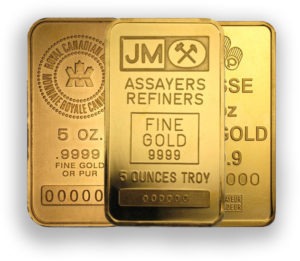 Gold bars are usually produced by private mints and dealers, although some government-owned mints produce them as well. They are available in a huge variety of sizes, from as small as 1 gram to as large as 100oz. Smaller bars provide an easy way for someone to get started with gold investing with a very small amount of money. And for sophisticated investors, gold bars offer the benefit of a (generally) lower premium over spot price, when compared to gold coins.
Gold bars are usually produced by private mints and dealers, although some government-owned mints produce them as well. They are available in a huge variety of sizes, from as small as 1 gram to as large as 100oz. Smaller bars provide an easy way for someone to get started with gold investing with a very small amount of money. And for sophisticated investors, gold bars offer the benefit of a (generally) lower premium over spot price, when compared to gold coins.
Private Mint Gold Bars – Various private mints produce and market gold bars. Some popular options include Credit Suisse, APMEX, JM, Engelhard, Valcambi, and Pamp Suisse. These gold bars typically have a low premium over spot value, and are widely available in all sorts of sizes. We always carry a good selection of gold bars at BRC!
Government Mint Gold Bars – Less common but still widely available are gold bars produced by government mints. The Royal Canadian Mint, Perth Mint and Austrian Mint all produce gold bars, as do some other government-owned refineries and mints.
Tips for Buying Gold Bullion
Before getting started with investing in gold, you’ll want to consider all your options. These are some things we recommend keeping in mind:
Proper Sourcing – Buying physical gold entails some risks. First and foremost, it’s vital to work with a trusted gold dealer. Do not try to buy gold off Craigslist or at a pawn shop – there’s a high likelihood that it will be fake gold or a scam! Bellevue Rare Coins is a trusted Seattle gold dealer that has been in business since 1979. When you buy gold at BRC, you can trust that you’re getting a legitimate product at an honest price.
Safe Storage – Even after the buying process, you need to keep the safety of your investments in mind. Where you store your gold is an important consideration. You may want to consider getting a safe deposit box or another type of secure, off-site storage solution. If you opt to keep your gold at home, this guide goes over some home storage tips.
Liquidity – You’ll want to consider the liquidity of your investment choices (essentially, how easy it is to sell when you want to). Various factors influence liquidity, including the item’s gold content and the brand/mint that produced it. Generally speaking, smaller sizes are more liquid – so a 1/2oz gold coin will be much easier to sell than a 10oz gold bar. And usually the more popular gold coins, like American Gold Eagles and Canadian Maple Leafs, are the most widely traded and therefore the most liquid.
Premium Over Spot – All gold products will carry some premium over spot value. What this means is that if gold is trading at $1200 per troy oz, gold coins and bars will likely be trading at $1210-$1260+ per troy oz. See our live pricing page to get an idea of what some popular items trade for (this page lists our sell price for popular gold coins & bars). Some investors like to stick with low-premium gold bars, while others prefer the more liquid and trusted coins like American Silver Eagles (which carry a higher premium). This is a personal choice for every gold investor to make.
Numismatic Value – All gold products carry intrinsic value – or the value of the gold they contain. This is also referred to as “melt value”. Some gold products also carry numismatic value, meaning that to a coin collector, they may be worth more than the actual melt value. Pre-1933 US gold coins are a good example of this – their overall worth is a hybrid of their melt value and collector value.
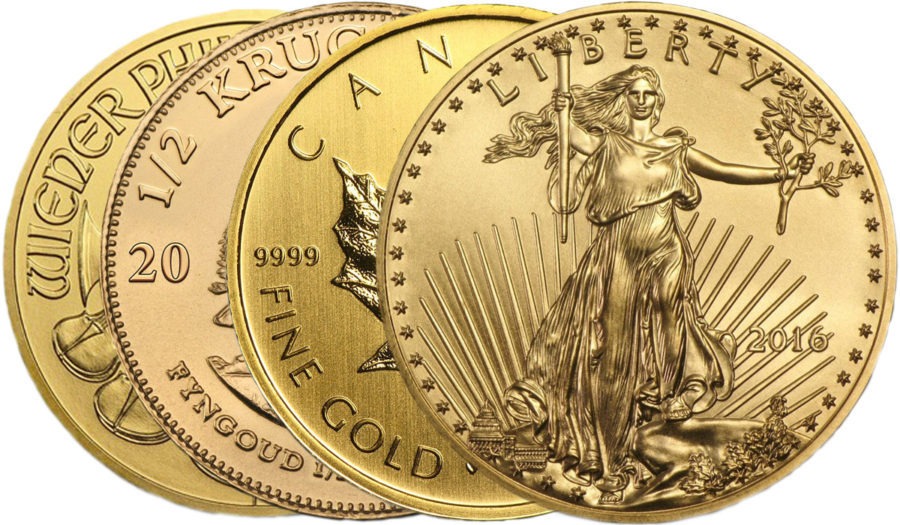
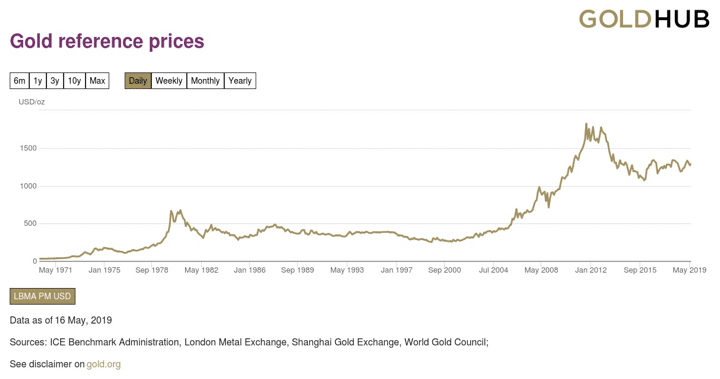
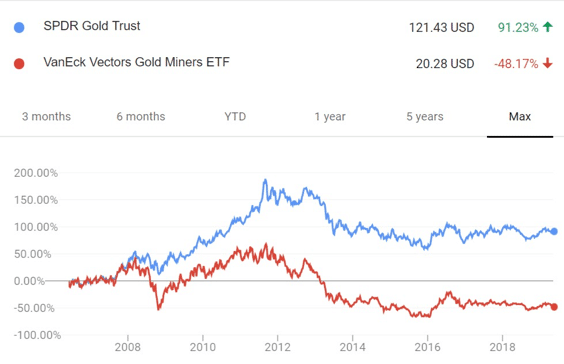

 Gold bars are usually produced by private mints and dealers, although some government-owned mints produce them as well. They are available in a huge variety of sizes, from as small as 1 gram to as large as 100oz. Smaller bars provide an easy way for someone to get started with gold investing with a very small amount of money. And for sophisticated investors, gold bars offer the benefit of a (generally) lower premium over spot price, when compared to gold coins.
Gold bars are usually produced by private mints and dealers, although some government-owned mints produce them as well. They are available in a huge variety of sizes, from as small as 1 gram to as large as 100oz. Smaller bars provide an easy way for someone to get started with gold investing with a very small amount of money. And for sophisticated investors, gold bars offer the benefit of a (generally) lower premium over spot price, when compared to gold coins.